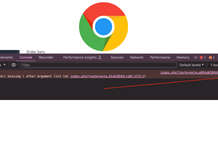Google is the company that developed and maintains the front-end framework Angular. It is renowned for its strong features, scalability, and flexibility. The vast library and tool ecosystem of Angular is a major factor in its success. Angular component libraries, in particular, are essential for speeding up development because they offer ready-made, modifiable user interface components.
Component libraries are a great way when you hire Angular developers. They will improve their Angular projects without going over budget. The top 6 free Angular component libraries that can speed up development and provide a polished user experience are examined in this post.
Angular: A Synopsis
A community of experienced developers and the Google Angular Team oversee the open-source, Typescript-based Angular web framework. With TypeScript, AngularJS has been completely rewritten, eliminating any reliance on Javascript. Thousands of users can be supported by sophisticated desktop and web apps made with Angular.
What is a Component Library?
A component library is an assemblage of pre-coded software components or pre-designed webpage components. Instead of having to write all the code from scratch, designers can just add the component to their application.
When done correctly, it becomes incredibly time-efficient and aids in the consistency of designers’ work. Customizable functionalities are also offered by a lot of UI component packages. As a result, developers are free to exercise their creativity and modify or create entirely new components.
The team’s ability to collaborate will also benefit from the component library with angular development services. Using a component library can simplify version control and maintain consistency across the entire application, especially for large projects involving multiple team members.
What Are Angular Component Libraries?
An Angular component library is a set of ready-to-use UI components packaged together for creating inventive, dynamic, and consistent web solutions. These libraries add to Angular’s core functionality. The same broad issues, such as providing a consistent user interface, presenting data, and permitting data entry, must be resolved by numerous programs. For specific domains, developers can provide generic solutions that can be modified for usage in various applications.
These libraries’ components are usually made to be extremely reusable and configurable, so you can easily modify buttons, forms, navigation menus, and other elements to fit your project requirements, app logic, and unique demands.
Top Angular Component Libraries
Angular is an extensive framework with a plethora of features and tools. Its numerous built-in libraries facilitate the job of developers. The Angular-CLI project has pre-installed core libraries like RxJS. It also contains a large number of frontend and API-specific libraries.
However, an excessive number of integrated libraries may prevent it from becoming unduly hefty. Working slowly and laboriously can result from having an excessive number of integrated web components that developers hardly ever use.
But if developers have to write new code for every tiny function, using Angular becomes difficult for them as well. Giving a user room for creativity and customization is also important. As a result, Angular developed Angular Material to give users access to external components. In addition, you have access to a plethora of UI component libraries, like Vaadin Components, NG Zorro, NG Lightening, and Onsen UI.
Companies can reduce development time and costs by using external Angular component libraries. The top libraries for Angular UI components are listed here for your use in Angular projects.
1. Angular Material
Angular Material is the official components library created by the Angular team; it was formerly known as Material2. It was created using TypeScript and complies with every rule and recommendation found in Google Material Design.
A vast array of components are available for designing layouts, toolbars and menus, navigation menus, pop-up windows, building blocks, and tables for presenting data. Moreover, the command line templates let you swiftly include new functionality. For development organizations who need to create bespoke tools and widgets, it is of great help.
2. NG-Bootstrap
2015 saw the creation of the well-known Angular Bootstrap component library, ng-bootstrap. Using Bootstrap 4 CSS, NG Bootstrap offers Angular widgets that are constructed from the ground up. Except for knowing how to use Angular and Bootstrap, these widgets are easily accessible and user-friendly. This Angular library is supported by a robust development team.
Access to Bootstrap components such as a date picker, popover, modal, carousel, and typeahead is provided. But because updates are often delayed, its use has been declining over time.
3. NGX-Bootstrap
Combining Angular functionalities with Bootstrap features is made possible by the NGX-Bootstrap module. All of the essential Bootstrap elements are included and adapted for Angular functionality. This library has a great deal of performative flexibility.
It functions well with desktop and mobile applications built with Angular. Development teams can utilize NGXbootstrap to create scalable Angular applications if they are familiar with Bootstrap and have access to thorough documentation. Angular developers may choose it over NGbootstrap due to its integrated animation support, sortable components, and frequent updates.
4. Onsen UI
An open-source set of UI elements for creating HTML5 hybrid mobile apps is called Onsen UI. It offers a wide range of Angular components that you may use to build online applications that run on several platforms.
It provides access to ready-to-use UI elements including toolbars, forms, side menus, and dialog for a more native appearance, and it supports both Android and iOS development. It is quite simple to set up and get the hang of.
5. Prime NG
The most potent library of Angular UI components is thought to be Prime NG. Prime NG provides native Angular CLI application templates that are extremely customizable along with a selection of themes. Every widget is freely downloadable from GitHub and is open source.
Numerous UI elements are available in Prime NG for buttons, file uploads, message notifications, and personalized graphing tools. It offers a file-uploading feature as well. It is ideal for creating mobile applications that respond to touch.
6. Vaadin Components
Vaadin is a collection of elegant Java Web App UI elements. The Web Components standards serve as the foundation for Vaadin’s components. They function flawlessly with any framework and provide browser-native performance.
To construct sophisticated web and mobile apps, Angular UI components are combined with the unique capabilities of polymer elements. Vaadin facilitates effective code sharing, making it a great tool for working with large teams.
Summing Up
The greatest Angular component library for 2024 is what we have given you. Every library on the list is the greatest of the best; it offers every functionality that might be needed to create stunning Angular apps.
Among the best Angular libraries are Vaadin, ngxBootstrap, and Angular Material. It is impossible to declare one person superior to another in every way. But there’s just one that’s ideal for you, based on how you use it and your project team. For all your development needs, including locating your UI components library, our team of knowledgeable Angular engineers is here to help.






